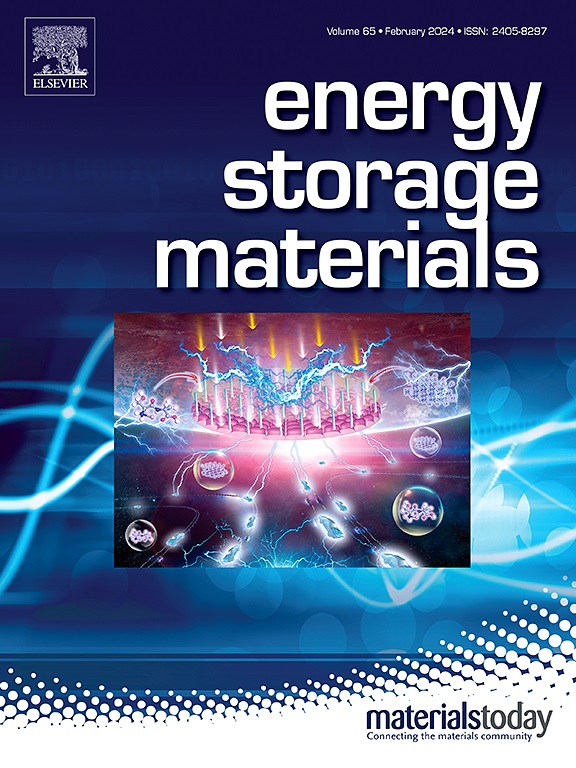Long-lasting supercapacitor with stable electrode-electrolyte interface enabled by a biopolymer conjugate electrolyte additive
IF 18.9
1区 材料科学
Q1 CHEMISTRY, PHYSICAL
引用次数: 0
Abstract
Supercapacitor is one of most widely researched energy storage system because it stores more charge than capacitor and charges-discharges quicker than batteries. As surface reaction is prominent in the energy storage in supercapacitor, stable interface between electrode and electrolyte is a key to high performance. Although a formation of stable interface was achieved by surface modification of electrode and/or designing of novel materials/composites, they were limited by their complicated processing steps, costs, scalability, and eco-friendliness. In this work, we have firstly introduced a novel electrolyte additive composed of conjugated biopolymer of gum kondagogu/sodium alginate (KS), which is widely available and recyclable. At the KS concentration of 5 mg ml-1, the capacitance retention improved from 58 % to 93 % for 30,000 cycles at a current density of 4.0 mA cm-2, which was remarkable given the use of acidic H2SO4 electrolyte and carbon-based electrode. Postmortem analysis revealed the suitable concentration of KS necessary to ensure the interfacial protection as well as alleviation of side reactions by the introduction of KS, which can also be extended and scaled up in an industry scale.


持久的超级电容器,稳定的电极-电解质界面由生物聚合物共轭电解质添加剂实现
超级电容器具有比电容器存储更多的电荷和比电池更快的充放电速度,是目前研究最广泛的储能系统之一。由于表面反应在超级电容器的能量存储中占有重要地位,因此稳定的电极与电解液之间的界面是提高超级电容器性能的关键。虽然通过电极表面修饰和/或设计新型材料/复合材料可以实现稳定界面的形成,但它们的加工步骤复杂,成本高,可扩展性和生态友好性受到限制。本文首先介绍了一种由孔大胶/海藻酸钠(KS)缀合生物聚合物组成的新型电解质添加剂,该添加剂具有广泛的可回收性。当KS浓度为5 mg ml-1时,在4.0 mA cm-2的电流密度下,在3万次循环中,电容保持率从58%提高到93%,这在使用酸性H2SO4电解质和碳基电极的情况下是显著的。事后分析表明,适当的KS浓度可以确保通过引入KS来保护界面并减轻副反应,这也可以在工业规模上扩展和扩大。
本文章由计算机程序翻译,如有差异,请以英文原文为准。
求助全文
约1分钟内获得全文
求助全文
来源期刊

Energy Storage Materials
Materials Science-General Materials Science
CiteScore
33.00
自引率
5.90%
发文量
652
审稿时长
27 days
期刊介绍:
Energy Storage Materials is a global interdisciplinary journal dedicated to sharing scientific and technological advancements in materials and devices for advanced energy storage and related energy conversion, such as in metal-O2 batteries. The journal features comprehensive research articles, including full papers and short communications, as well as authoritative feature articles and reviews by leading experts in the field.
Energy Storage Materials covers a wide range of topics, including the synthesis, fabrication, structure, properties, performance, and technological applications of energy storage materials. Additionally, the journal explores strategies, policies, and developments in the field of energy storage materials and devices for sustainable energy.
Published papers are selected based on their scientific and technological significance, their ability to provide valuable new knowledge, and their relevance to the international research community.
 求助内容:
求助内容: 应助结果提醒方式:
应助结果提醒方式:


